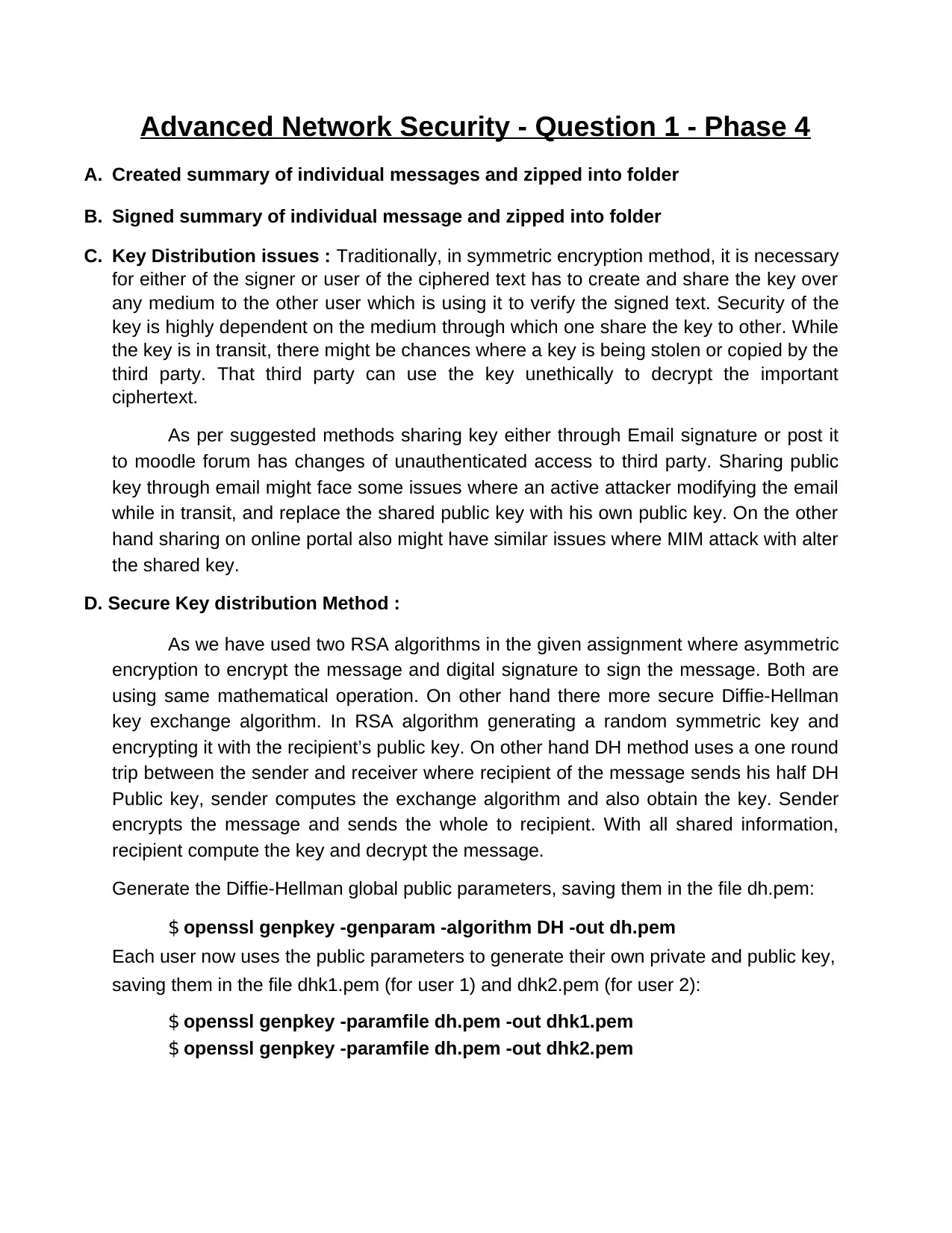Advanced Network Security - Phase 4
VerifiedAdded on 2019/09/25
|2
|645
|256
Report
AI Summary
This report addresses key distribution issues in network security within the context of an Advanced Network Security assignment (Phase 4). It begins by outlining the challenges of traditional symmetric encryption key sharing, highlighting vulnerabilities to interception and modification during transit. The report then proposes Diffie-Hellman key exchange as a more secure alternative to the RSA algorithm used in the assignment. Detailed instructions for implementing Diffie-Hellman using OpenSSL commands are provided, demonstrating the generation of public and private keys, key exchange, and derivation of a shared secret. Finally, the report compares the pros and cons of RSA and Diffie-Hellman, noting the differing security concerns and cryptanalysis vulnerabilities, concluding that Diffie-Hellman offers stronger security and is government-approved.
1 out of 2







![[object Object]](/_next/static/media/star-bottom.7253800d.svg)